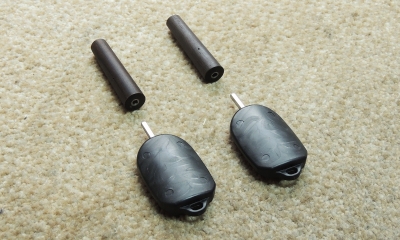Welcome to our forum. A Message To Our New and Prospective Members . Check out our Forum Rules. Lets keep this forum an enjoyable place to visit.
 Topic RSS
Topic RSS



 (3 votes)
(3 votes) Advanced member
 Offline
OfflineThat's a good point about everyone's bow holds being different based on hand size. Wish I didn't have to figure that out on my own. Some XL gloves can be too snug and my bow grip was always tense from emulating others' grips from diagrams and photos. After I learned to discard that and form my own hold with the goals of it being relaxed and flexible did it ever feel right.
The same concept, I think, can be applied to left hand technique. I have large hands and my left hand doesn't feel uncomfortable. Only thing notable is my knuckles sometimes rap the peg during F vibrato on the E string. Hand size doesn't always account for different hand shapes, of course. Luckily, I have long fingers.
This is what I've found works:
With big hands, form a big open pocket in the C of that hand. Keep those fingers limber and give them plenty of breathing room. Let the fingers lead with all the reaching. Goal is to keep that hand as loose as you can so the fingers have all the space they need. This includes allowing space behind the neck when needed. You don't need to stop the strings with as much pressure with bowed instruments and you should use this to your advantage. Your hand shouldn't tighten on the neck as it does on a guitar or mandolin.
Stretching you fingers all over the neck and practicing silent vibrato can also help loosen the fingers before you play.
I never had formal training so I could be wrong but it seems to work for me.
Regulars
 Offline
Offline

Success is the progressive realisation of a worthy ideal. —Earl Nightingale.
Regulars
 Offline
Offline
Here are my thoughts on the bow hold...
The exact position of your fingers on a bow grip is not as critical as maintaining a relaxed, low tension hold.
Try this test... hold your bow in whatever position is most comfortable and allow the bow to rest on the strings in a normal manner. Concentrate on your bow hand and allow it to relax to the point where you feel like the bow will almost fall out of your hand. Now observe the positions of your fingers at this point. This is your most natural and relaxed bow hold.
Now draw an imaginary line in your mind from your bow hand to the strings (an exact right angle to the strings). This should be the exact path your bow should take as you pull it across the strings. You should also be able to control your tone throughout the entire length of the bow. So as long as your bow is remaining on that straight line and you are still relaxed in your grip, and your tone remains consistent, you are doing it correctly, regardless of exactly where your fingers are situated.
If your bow deviates from that line, or if your grip becomes tense, or if you are having any difficulty maintaining a consistent tone, there is something that needs correction. Those are the critical factors in how you hold the bow.
I know it is a lot to work on, but the key to playing beautifully, maintaining tone, playing at all different speeds, playing with good dynamics (soft, loud, using attack, projection) is your right hand. This is even more critical than the left hand. The bow determines how beautiful you play.
I am constantly working on my bow hold as far as tension, control and consistency in my sound and the quality of my playing. It is ongoing and I will probably always work on it as long as I am able to play violin.
- Pete -
1 Guest(s)


 Log In
Log In Register
Register Home
Home









